Water Works
Compiled by Dianne Finstad
The growth and expansion of the Innisfail Golf Course over the past century would not have been possible without a major ingredient – water – and the work to get it to the course. While the parkland of central Alberta generally has sufficient to abundant moisture, which supports the many agricultural operations surrounding Innisfail, the water needs of a golf course are even more demanding and precise.
That became evident in 1967 when members decided to move to grass greens on the nine holes. There were three converted a year, finishing in 1971. That’s also when John Bristow, plant superintendent, and Shell, donated aluminum pipe for the first irrigation. A portable pump on wheels was used to draw water from Hazelwood Lake. Doug and Ron Bristow chuckle as they recall as ten and eleven-year-olds, it was their job in the spring and fall to walk out in the lake’s deep mud with the suction hose, in their swimsuits, to prime and attach it.
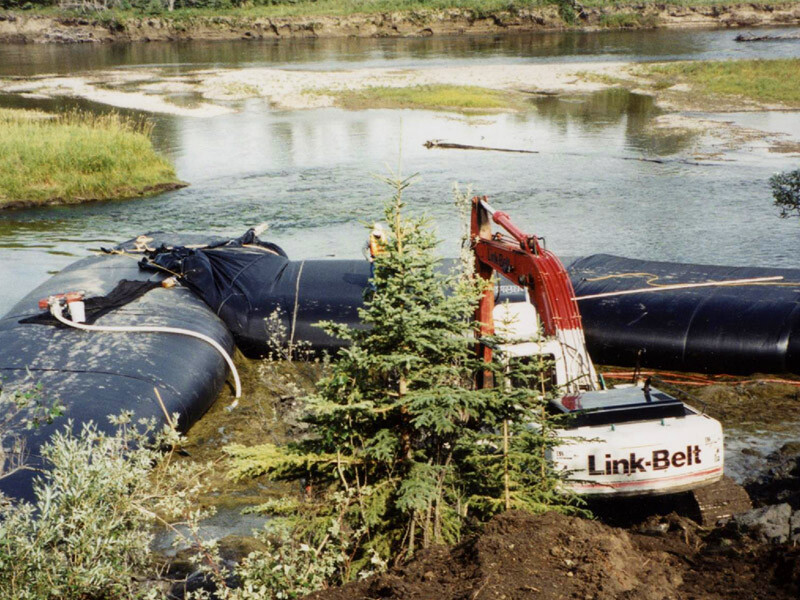
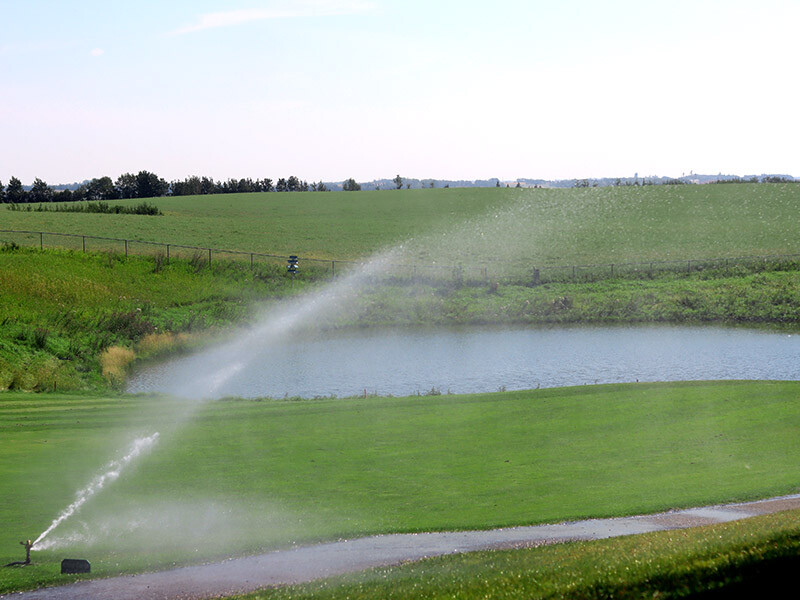
“It was a great source of humour for our Dad to make us do that,” smiled Doug Bristow. “It was cold!”
“The pump would only do three greens a night,” recalls Ron Bristow. “So we would come out every other night and unhook the pipe and hustle it through the bush again to do the other greens. There was only enough pipe to do three greens. Then there were the large one-and-a-half-inch rubber hoses they used to drag out to hand water all the greens.”
Definitely a labour-intensive system, but it served its purpose. By 1978, the decision was made to install a sprinkler system for the fairways, at an expected cost of around $50,000, which required the club to take out a mortgage. The irrigation system was installed, but where to source the volume of water needed? The initial plan to use Dodd’s Lake was dealt a blow when the Department of Environment was ‘concerned it would result in excessive damage to the foliage around the lake’ (according to the board meeting records). So while the board looked at putting in a water line from the river, another option became available – bring in water from the town’s sewage lagoon to supplement the Hazelwood Lake supply, so the pipeline was built in that direction instead. It was a win-win because it helped reduce the town’s effluent, so the Town helped the project move forward with a $100 thousand grant. Also, there were no residences in the area then. Landowner right-of-ways were obtained and the pipeline installed, running from the lagoon right under Centennial Park out to Hazelwood Lake at the course. It was completed and pumping by 1984.
The system worked but was not without its challenges. Innisfail Golf Course General Manager then, Jim Romane, points out that when they started putting the effluent in, the water wasn’t very good for the grass because it had so much salt in it. So acetates had to be added to neutralize the irrigation water, and more aeration was done on the course. There are lots of memories of the many ‘DO NOT DRINK THE WATER’ signs all around the course! There were some pump problems as well, and when the Club considered the expansion to 18, it was clear a bigger pump and pipeline would both be necessary.
The original irrigation contractor was Akis Papadopolous, who helped install the pumphouse. Members recall since the golf course was built on a hundred feet of sand, the pumphouse foundation piles kept going deeper and deeper – down 60-80 feet on some. Others never did find the bottom.
Water was sourced from the Town’s lagoon for close to two decades. But then there started to be some more environmental restrictions on usage of the water, because of the effluent connection. Some noted there were also use limitations during the day if people were around. It’s difficult to keep a golf course green if you can’t run the irrigation during the day! And the Town was talking about shutting down its sewage treatment plant, which would’ve left the golf course without a water source. Manager Jim Romane recognized the gravity of the situation and got to work on a solution.
Once again, discussions turned to the river, so Romane and the board went to work with Alberta Environment to secure permission for the course to draw water from the river. They had to work every political connection they had to lobby for the decision. Eventually, they got the go ahead, and some say IGC was one of the last to get a license to use Red Deer River water.
To get the water from the river to the course, Innisfail was able to access the ‘wet well’ inlet at the river, which dated back to the days when river water was needed for the train steam engines. The course also got to use the right of way from the old line to the town for the new line, which saved a lot of extra negotiating.
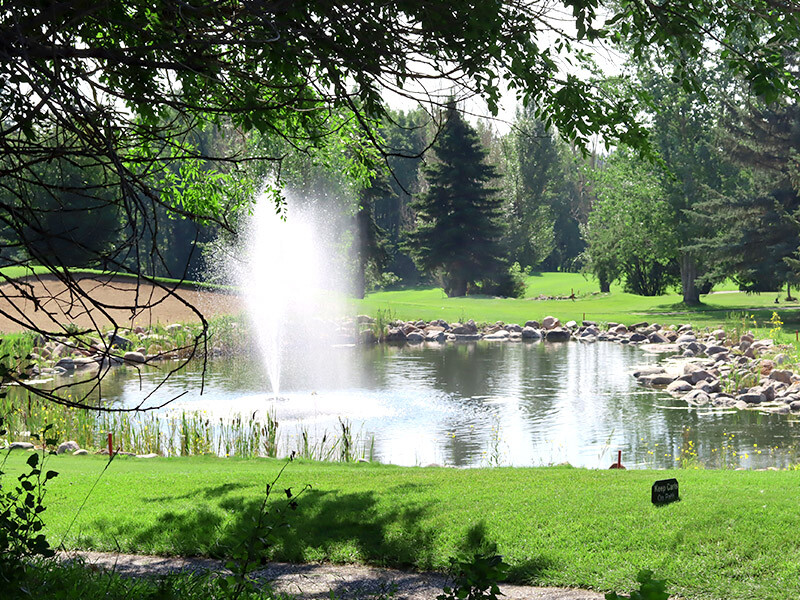
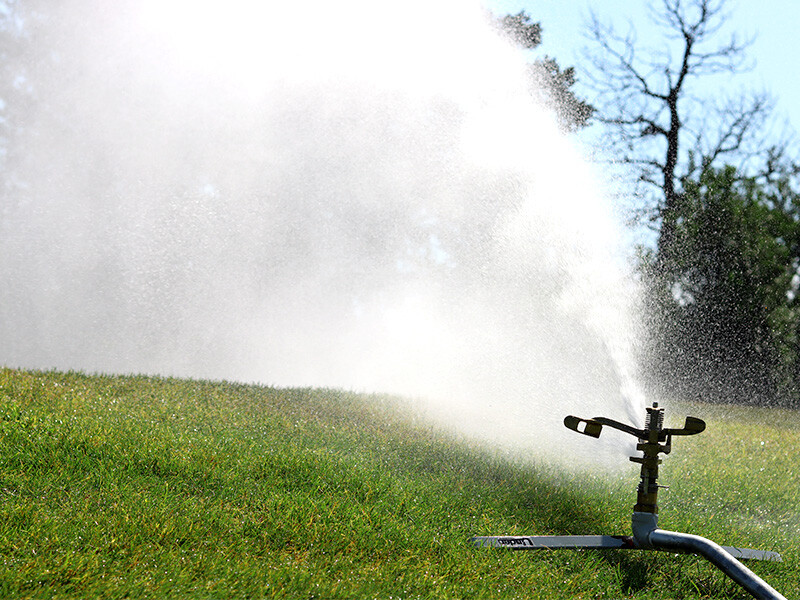
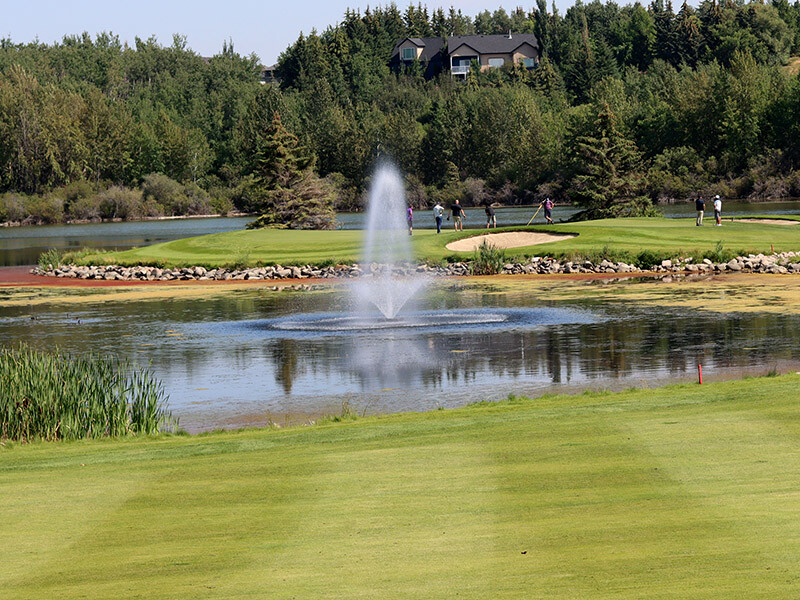
A dam was built around an infiltration gallery into the river, and a pipe was buried in which ran up to the pumphouse, the little brown shack on Aspen 5. Water comes out of the river and into the pond on the southwest side of Aspen 5 green.
The river line was completed two years before the course expanded to 27 holes, which helped spread out the costs of that project as well. But there was no way the extra holes could be added if it hadn’t been for the good, stable water system and source. Once again, Bristow’s were involved, excavating for an eight-foot deep six-inch poly pipeline to be installed, which was functioning by 2002. During the new expansion construction (2005-06), a new pumphouse was installed, and that’s still how the Golf Course gets its water supply today.
Long-time IGC Superintendent and former General Manager Dwayne Simpson was instrumental in the water works development.
“The quality of water is a hundred times better than the effluent,” Simpson comments. “It sure made life easier for the superintendent.”
“We’re fortunate to be grandfathered in (for river access). We’d never get that now.”
With his years of experience, Simpson knows well that water is the lifeline of any golf course and a resource to be protected. He believes that being able to access river water is another reason for Innisfail’s success.
“Without it, there wouldn’t be a golf course, not on the sand we’re in,” Simpson adds.
Looking back at history can provide some perspectives for looking forward. With increased pressure on the Red Deer River, and current supply concerns, water restrictions could be a future possibility. Keeping in mind the importance of good water for the course will be an ongoing challenge in the next century for the Innisfail Golf Club
